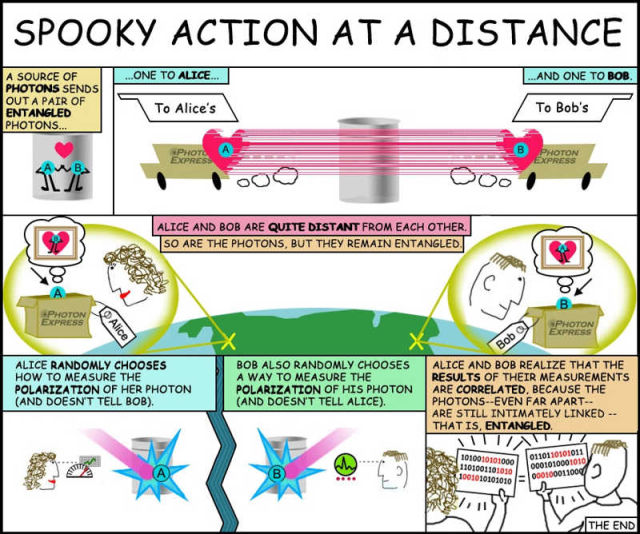The cartoon helps explain the idea of “entangled particles.” Alice and Bob represent photon detectors, in a love story at the smallest scales imaginable: particles of light.
The story developed by NASA’s Jet Propulsion Laboratory and the National Institute of Standards and Technology.
Image credit NASA/JPL-Caltech
It is possible to have particles that are so intimately linked that a change to one affects the other, even when they are separated at a distance.
Facts:
› Entangled particles influence each other instantaneously even when they are physically far apart.
› In the 1960s, theoretical physicist John Bell proposed that a model of reality with hidden variables must allow for this entanglement.
› Three papers published in 2015 support Bell’s hypothesis.
Albert Einstein did not entirely believe that the laws of quantum mechanics described reality. He and others postulated that there must be some hidden variables at work, which would allow quantum systems to be predictable.
Technology used to study the “love” between particles is also being used in research to improve communications between space and Earth. Credit: NASA/JPL-Caltech
How ‘Alice and Bob’ Test Quantum Mechanics
The paper by Shalm, Marsili and colleagues was published in the journal Physical Review Letters, with the mind-bending title “Strong Loophole-Free Test of Local Realism.”
“Our paper and the other two published last year show that Bell was right: any model of the world that contains hidden variables must also allow for entangled particles to influence one another at a distance,” said Francesco Marsili of NASA’s Jet Propulsion Laboratory in Pasadena, California, who collaborated with Shalm.
Read more at JPL.NASA







Might want to study this
Good job study Quantum Mechanics sir.